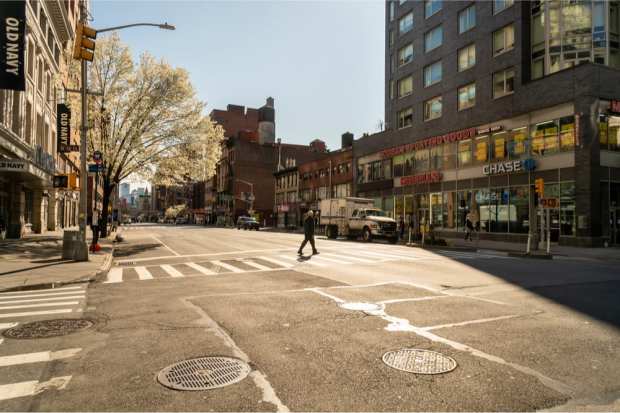Economic Data Show ‘One-Two Punch’ For Consumer Spending Rebound?

Economic data released Thursday (April 30) may hint at a “one-two punch” for consumer spending — indicating a reluctance to spend now, yes, but paycheck pressures may keep purses and wallets closed for a while.
Consumer spending slid 7.5 percent in March, which The Wall Street Journal reported represents the sharpest decline since 1959.
And in additional data released by the Commerce Department, personal income, which takes into account wages, salaries, Social Security and other benefits, was down 2 percent in March.
“I think this is the tip of the iceberg,” Blerina Uruçi, a senior U.S. economist at Barclays, told the Journal. “The worst is yet to come with the April data.”
Add to the mix that more than 3.8 million Americans filed for unemployment last week, bringing the total tally to more than 30 million individuals, and it’s unlikely that there’s likely to be a near-term rebound in consumer activity.
But it might also be the case that the impacts will linger.
The drop in personal income is especially worrisome because so many Americans are already stretched, with low visibility into how and when they can pay bills — with a ripple effect not just on current and future spending, but on how they can satisfy debt obligations.
The stage already has been set for consumer caution to be the rule of the day. As PYMNTS research has shown — detailed in responses from more than 2,100 individuals — six in 10 consumers live paycheck to paycheck. Roughly have of respondents say they have less than $2,500 in savings.
Losing that paycheck, of course, puts massive stress on financial foundations that underpin consumers and their families. Triaging becomes the order of the day.
As detailed in the latest “Navigating the COVID-19 Pandemic: How the Paycheck to Paycheck Economy is Beginning to Buckle,” the realities of unemployment are stark. The data were compiled at the end of March, and so the trends and worries observed back then likely have become even more acute as the COVID-19 pandemic has worn on.
We found that 55 percent of those who had lost their jobs since the pandemic said they would be able to live off cash reserves for two months before dipping into savings. In terms of those cash savings, 44 percent of those living paycheck to paycheck had less than $2,500 … and more than 15 percent had no savings at all.
The New York Fed reported earlier this year in its quarterly report on household debt and credit that household debt at the end of 2019 stood at $14.1 trillion, notably higher than the $12.7 trillion seen in the third quarter of 2008.
“Mortgage originations, including refinances, increased significantly in the final quarter of 2019, with auto loan originations also remaining at the brisk pace seen throughout the year,” said Wilbert Van Der Klaauw, senior vice president at the New York Fed at the time of the latest data released in February. “The data also show that transitions into delinquency among credit card borrowers have steadily risen since 2016, notably among younger borrowers.”
This was all before the coronavirus pandemic started to close businesses, hit consumer spending and throw people out of work — trends that, of course, began to accelerate from mid-March onward.
As personal income shrinks, so too, does buying power, the ability to service debt, and accumulate savings — all of it adding to the strain on households. Without income, spending must come from savings. But with only small cushions of savings in place, the spending will be short lived, if at all, and focused on necessity.
Unless things change, and soon, the outlook for future consumption growth will be bleak.
